Limits, Infinite Limits, Continuity
1/29
There's no tags or description
Looks like no tags are added yet.
Name | Mastery | Learn | Test | Matching | Spaced |
|---|
No study sessions yet.
30 Terms
How do you know if a function is continuous at a number “a”? What does it mean?
lim x→a f(x) = f(a)
it means that:
a is in the domain of f
lim x→a f(x) exists
lim x→a f(x) = f(a), its one sided limits also need to equal f(a)
What do you say if a function is not continuous at a number “a”
The function is discontinuous, or f has a discontinuity at a
What is the definition for one-sided continuity?
lim x→ a⁺ f(x) = f(a)
f is continuous from the right of a
or
lim x→a⁻ f(x) = f(a)
f is continuous from the left of a
(In words/broadly/main idea, not mathematically) How do you know if a function f is continuous on an interval?
f is continuous on an interval if:
f is continuous at every single x-value in the interval
Intuitively, what is a continuous function?
A function where you don’t have to lift your pencil to follow it (it doesn’t “break” or have “pieces”, it’s all one connected line)
When you are given a graph, and it asks you to identify and classify points of discontinuity, how do you do it? And how do you explain the function?
CHECK FOR EVERY X-VALUE:
Use the definition lim x→a f(x) = f(a)
continuous - definition works
discontinuous - definition does not work
You list your points of discontinuity as “x=(the x-value that is discontinuous)”
How do you know if the following functions are continuous?
f ± g
cf (c is a constant)
fg
f/g
NOTE - For these to be true: f and g must be continuous at a
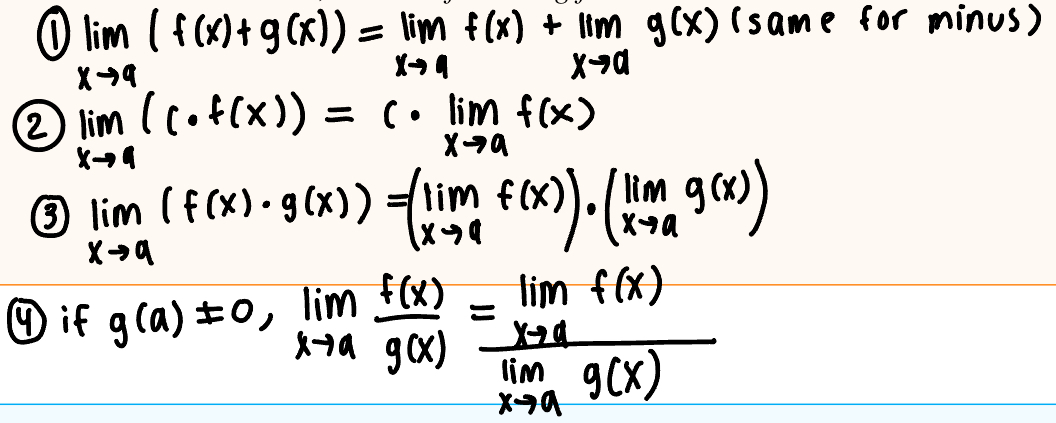
Which functions are continuous at every number in their domains?
polynomials
rational functions
algebraic functions
trigonometric functions
exponential functions
logarithmic functions
Domain of logs? Alone and in fractions?
Alone: >0
On numerator: >0 and combine with domain of the denominator
On denominator: >0 and can’t equal to 0

Practice
answer


How do you find the value of k so that the function is continuous on all real numbers? (explain the steps + do the practice problem)
answer
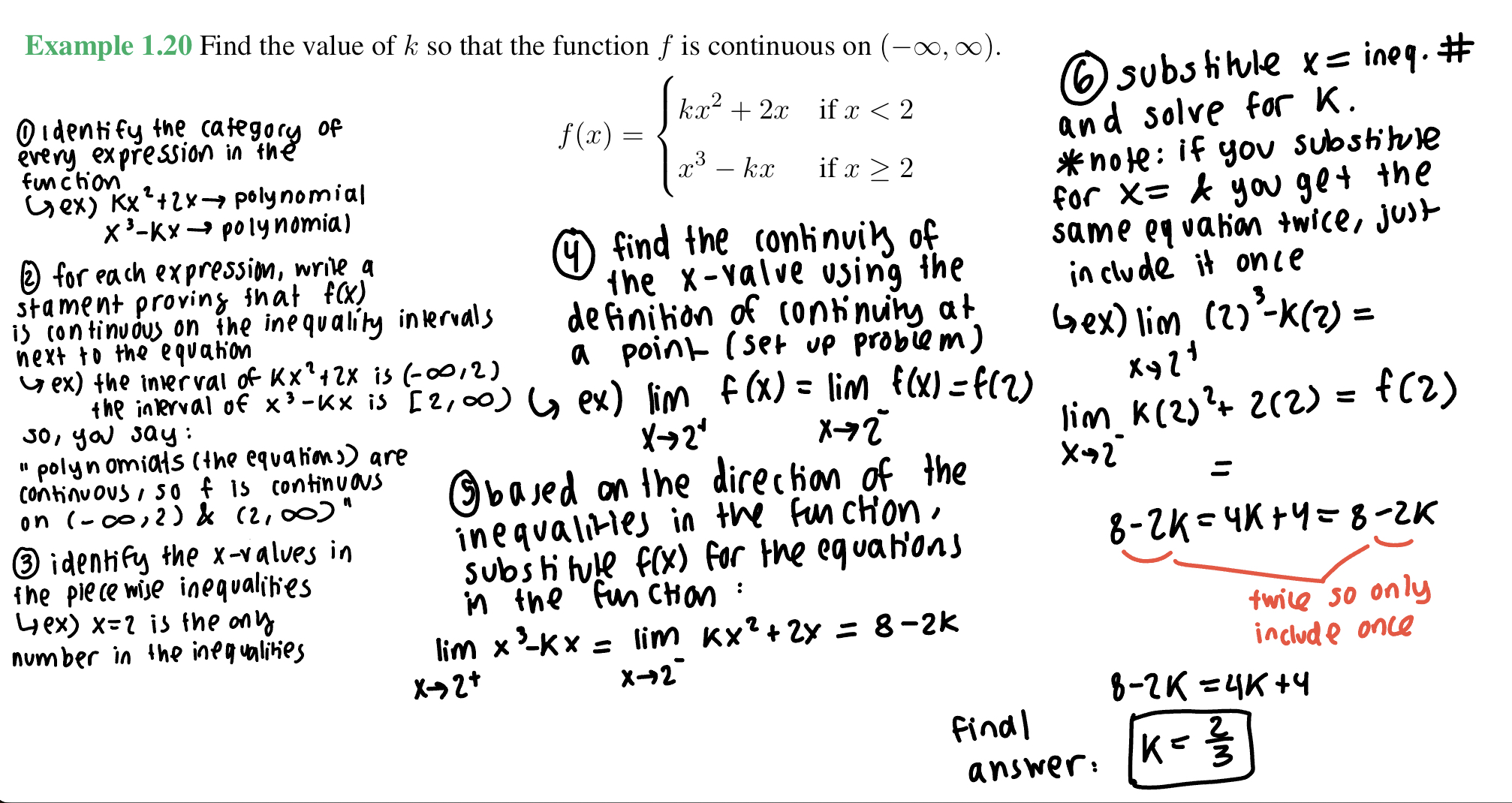
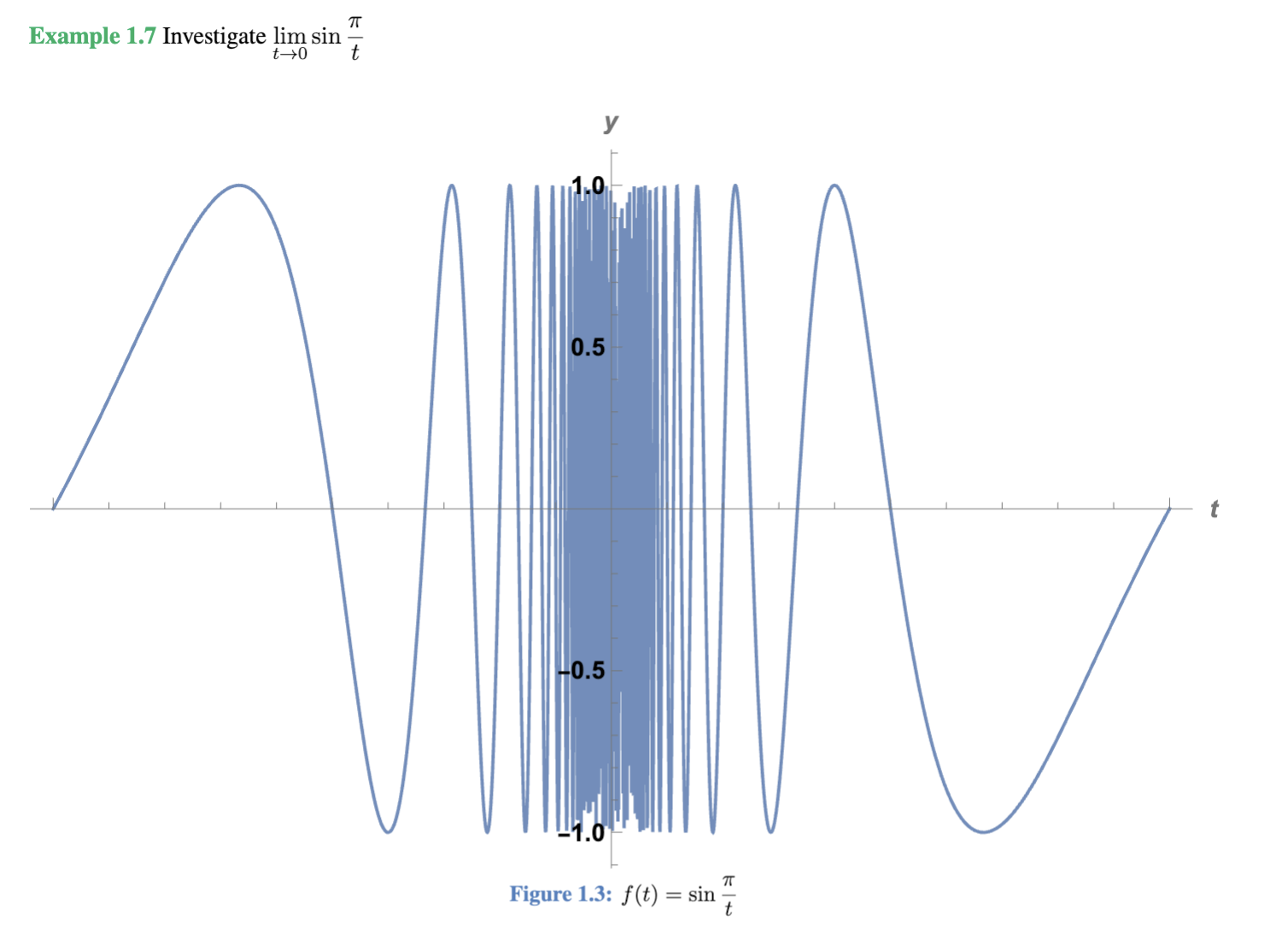
Practice problem, and explain your answer
DNE because the function oscillates infinitely many times as t → 0
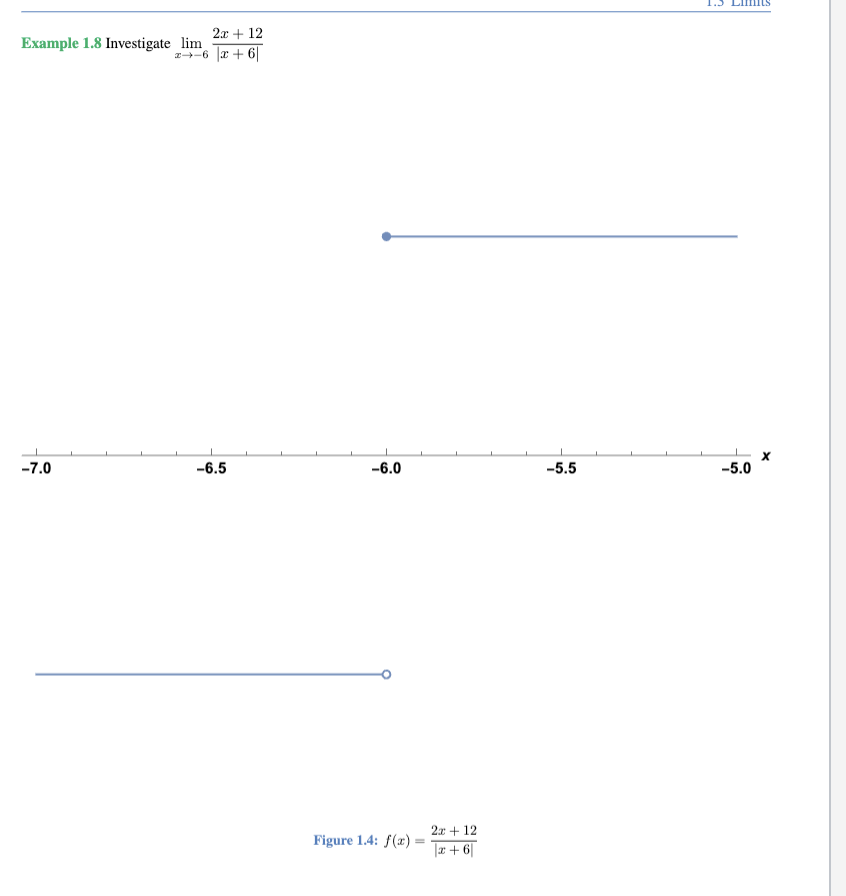
Practice problem
DNE because there is a hole and a point x= -6
n/a
n/a
How do you know that the line x=a is a vertical asymptote/what are the definitons?
If any of the following are true

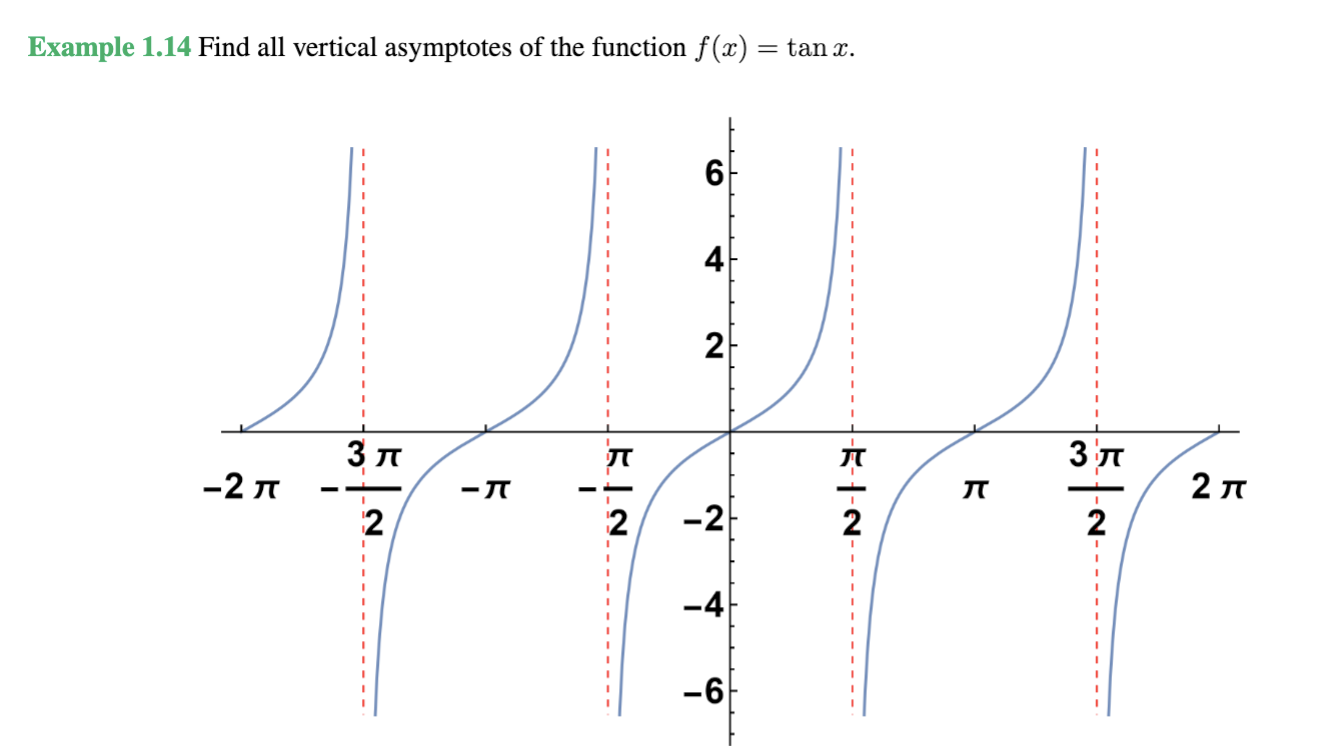
Practice problem
x=-3pi/2, -pi/2, pi/2, 3pi/2

Practice problem (only problem 3)
Answer (use the definitions of vertical asymptotes)
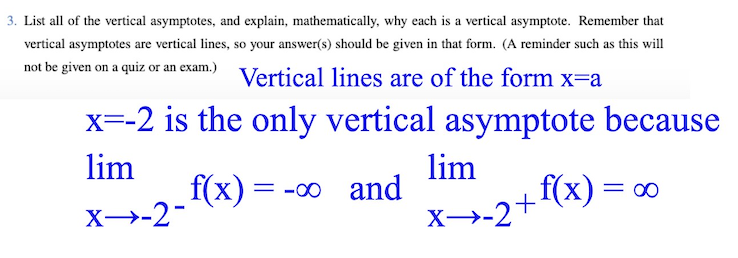
How do you solve a limit with just a polynomial?
Plug a inside the function
How do you solve a limit that is a fraction with simplified polynomials?
ex) lim x→ -3^+ x+2/x+3
Plug in the x
If you get 1/0, (or a nonzero number divided by 0), solve for an infinite limit
In this example, you plug in a number VERY VERY close to -3, but just to the right of it because the limit is coming from the right (ex. plug in -2.99 into the equation)
When you plug in the number into the equation, just focus on what sign the num/den is, and divide those signs together. then, write infinity with the sign, and that is your answer
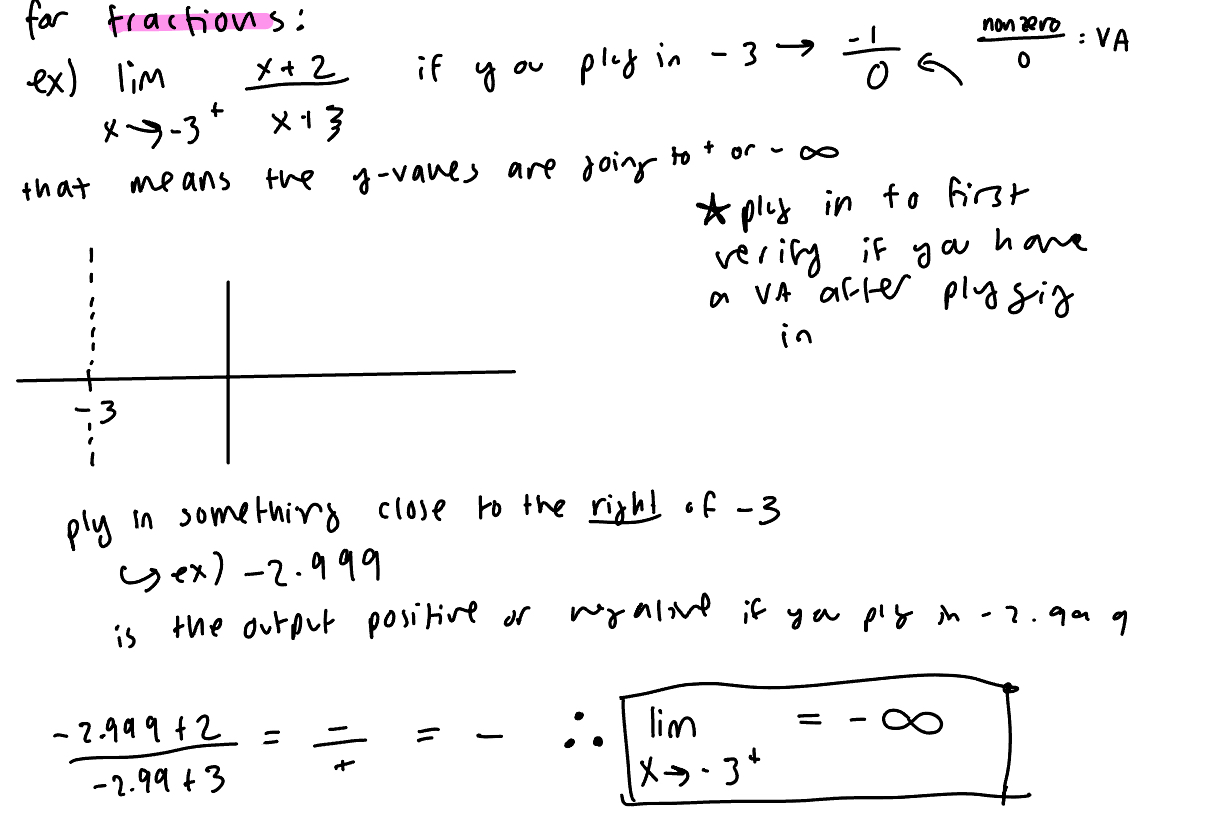
Explain these limit laws and the condition they need to exist:
Sum/difference law
Constant
Product law
Quotient law
Power law
Root law
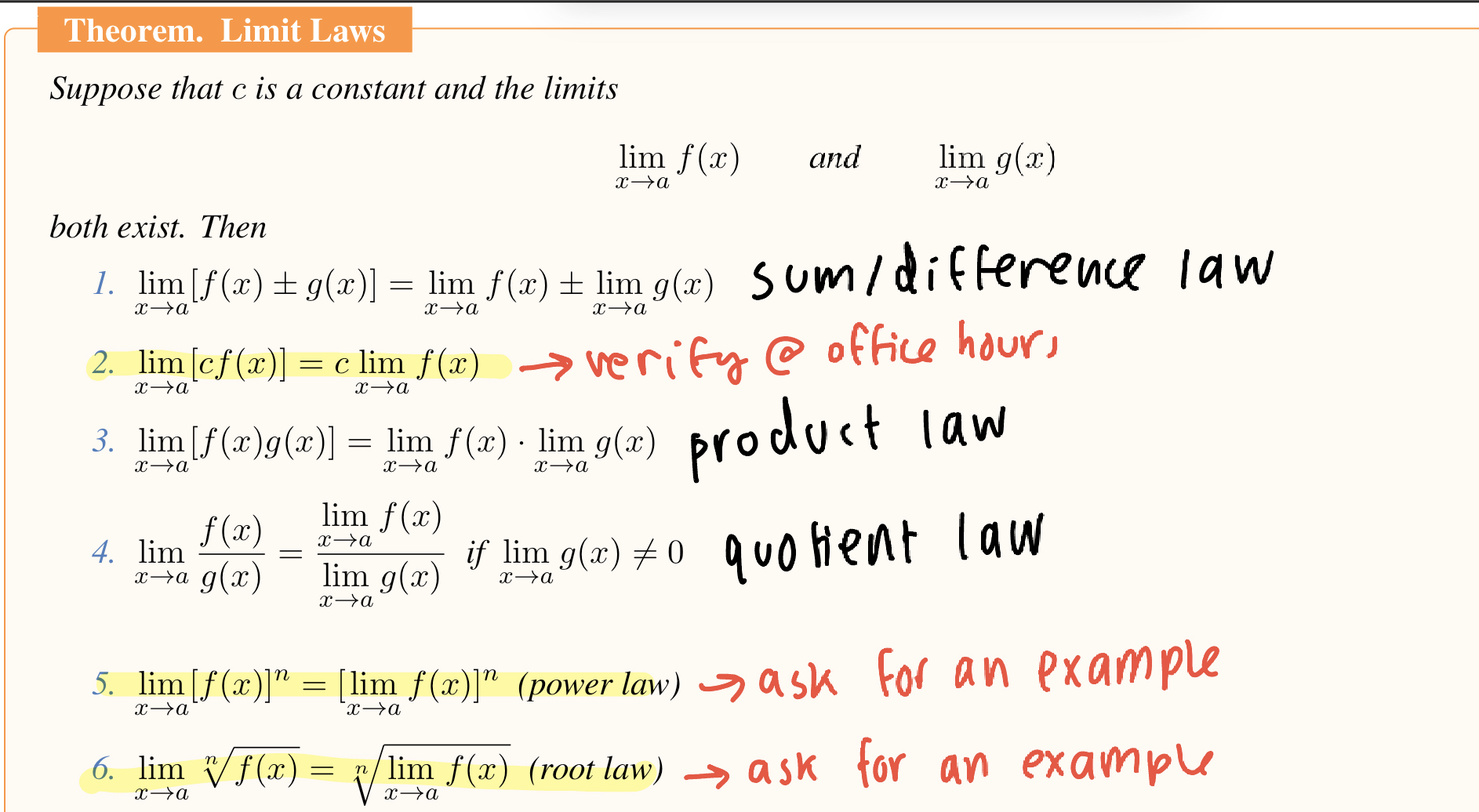
How do you solve a limit if you plug a point in and get 0/0 as a result?
Expand your equations and try again
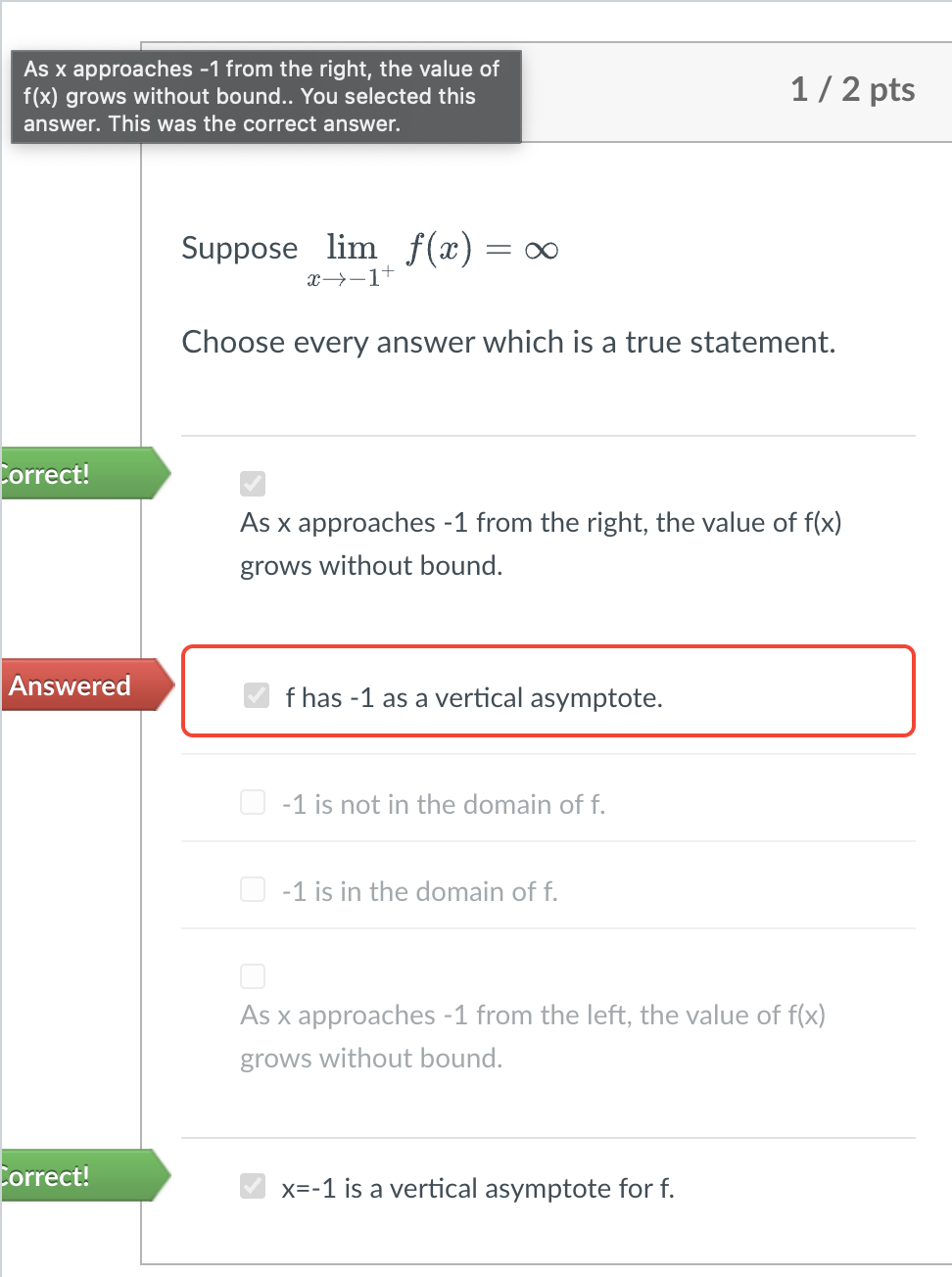
Why was that answer wrong?
Because vertical asymptotes are ALWAYS written in the form “x=#"
Explain the direct substitution property
If a function is one of the following types:
Polynomial function
rational function
algebraic function
Then:
if the function is defined at x=a, then lim x→a f(x) = f(a)
Let’s say there are two functions. The functions never meet except at one point where x=a, where one function has a hole, and the other has an actual solution. Can their limits equal each other at x=a, and if so how do you explain it?
If lim x→a g(x) exists, then lim x→a f(x) = lim x→a g(x)
(basically, one limit has to actually exist at x=a for this to be true)
Explain what the squeeze theorem is
If:
h(x) ≤ f(x) ≤ g(x)
lim x→a f(x) = L = lim x→a h(x) = L
Then:
lim x→a g(x) = L
Assuming:
8-x³≤f(x)≤8+x³, what is lim x→0 f(x)?
By squeeze theorem,
h(x)≤f(x)≤g(x),
and lim x→0 h(x) = L = lim x→0 g(x) = L, then
lim x→0 f(x) would mean you insert 0 into one of the functions, so
8-(0)³ = 8, so
lim x→0 f(x) = 8
What is the IVT?
if:
f is a continuous function on [a,b]
N is a number between f(a) and f(b)
f(a) does not equal f(b)
then:
an x-value, “c”, exists in (a,b) such that f(c )=N
Show that there is a solution to the equation
x^4+x-3=0 in the interval (1,2)
Practice problem where you apply the IVT
Define your function
ex) let f(x)=x^4+x-3
Explain how your function is continuous on all real numbers
ex) polynomials are continuous on all real numbers on their domain, f(x) is continuous on (1,2)
Plug in the end points of the given interval into the function
ex)
f(1) = -1
f(2) = 15
Use this answer template:
“since f(one number you plugged in from the end point of the interval) >0, and f(another number you plugged in from the end point of the interval) <0, and f(x) is continuous on (given interval), by the IVT there must be a c in (given interval) so that f(c )=0”
ex) Since f(1) < 0 and f(2) >0, and f(x) is continuous on (1,2), by the IVT there must be a c in (1,2) so that f(c )=0
What is the theorem for finding the limit of a composite function?
If:
lim x→a g(x)=b
f is continuous at b
Then:
lim x→a f(g(x)) = f(b)
or
lim x→a f(g(x)) = f(lim x→a g(x))
How do you know when a composite function is continuous?
If:
g is continuous at a
f is continuous at g(a)
Then:
f(g(x)) is continuous at a
OR
lim x→a f(g(x)) = f(g(a))